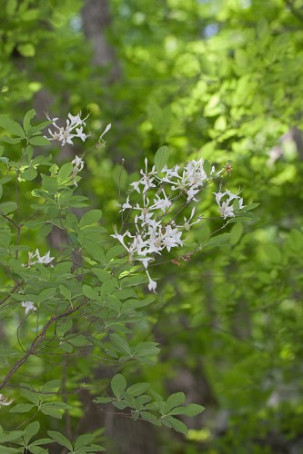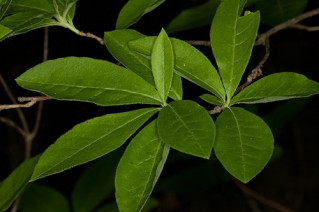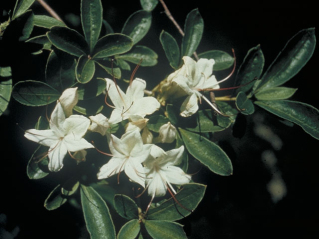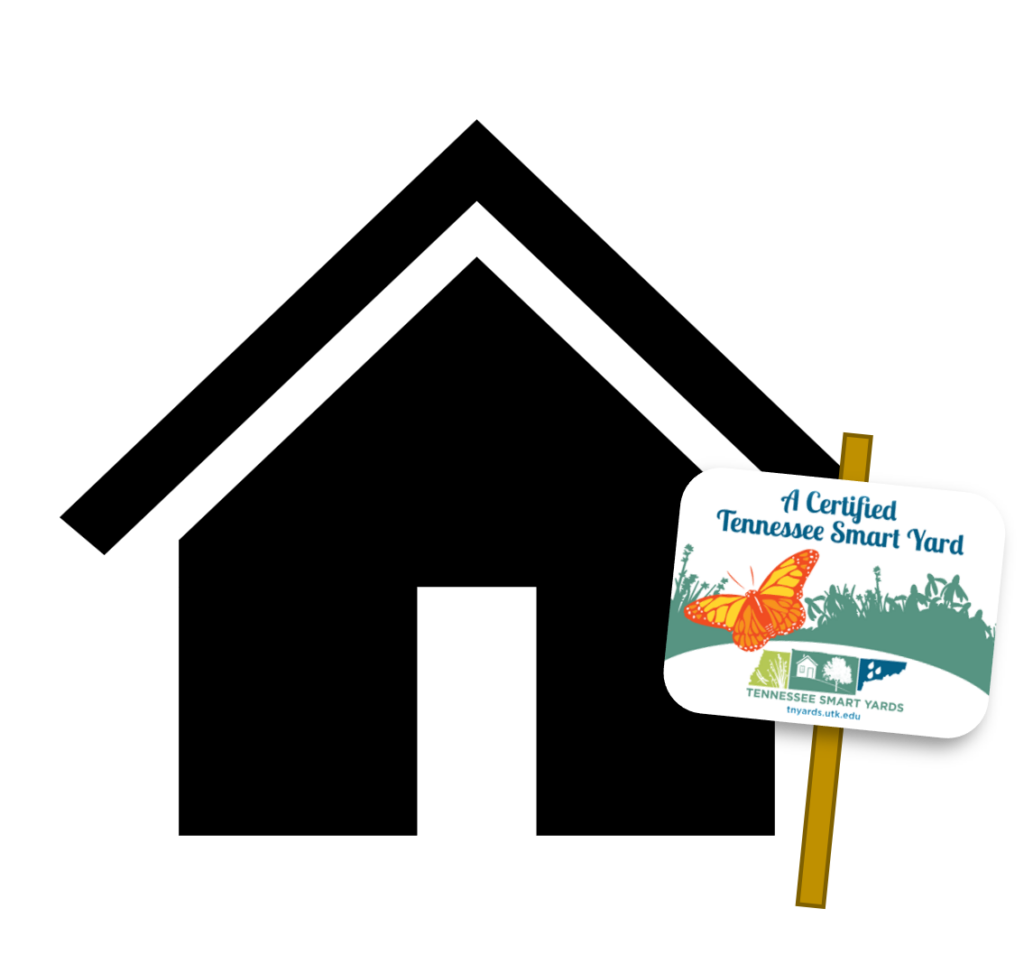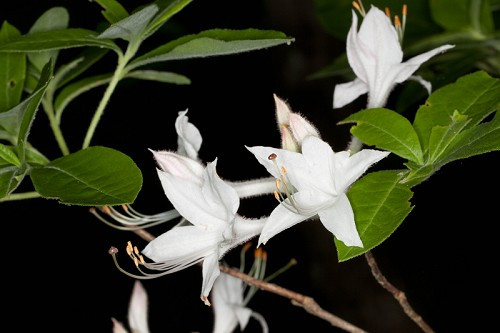
Common Name: Swamp Azalea
Full to part sun; wet to medium moisture level; coarse wet sands and gravels to fine sands, loamy sands, clay loams, stiff clays and peats and mucks; demands strongly to moderately acid pH.
4-8 feet height by 4-8 feet spread; blooms in July; white to pink flowers; fruit is a brown, short, hairy, oblong capsule in August that persists through late March.
Growth Rate: Medium. Slowly naturalizes by root suckers
Maintenance: Frequent disease and insect problems. Good cultural practices help reduce damage. Has a shallow, fibrous root system and needs an organic mulch to help retain moisture and stabilize temperatures. Avoid application of fertilizers which tend to create fertilizer burns. Rhododendrons are sensitive to high levels of fertilizer salts.
Propagation: Seed germination code A. Moderately easy from seed and difficult by cuttings. Seeds need to be mixed loosely into a sphagnum moss and sprinkled lightly over a 2:1 perlite/peat mixture and germinated under a mist or in a plastic tent at 45-50 degrees F.
Native Region: Limited to 7 counties in eastern Tennessee: Polk, Hamilton, Franklin, Bledsoe, White, Fentress, and Blount
Deciduous azalea with a loose, open habit. Showy flowers with a very spicy clove scent. Latest native azalea to bloom in summer. Good fall leaf color. Can be planted as a specimen plant or grouped in shrub borders. Occurs naturally in swamps, bogs, wet pine flatlands, wet lowlands, and sluggish stream banks. Tolerates periodic flooding but will not grow in soil where its roots are submerged in water. Foliage may scorch in full sun unless soil is kept uniformly moist. Low wildlife value, with limited use by birds. Attracts bees. Cultivars available.
